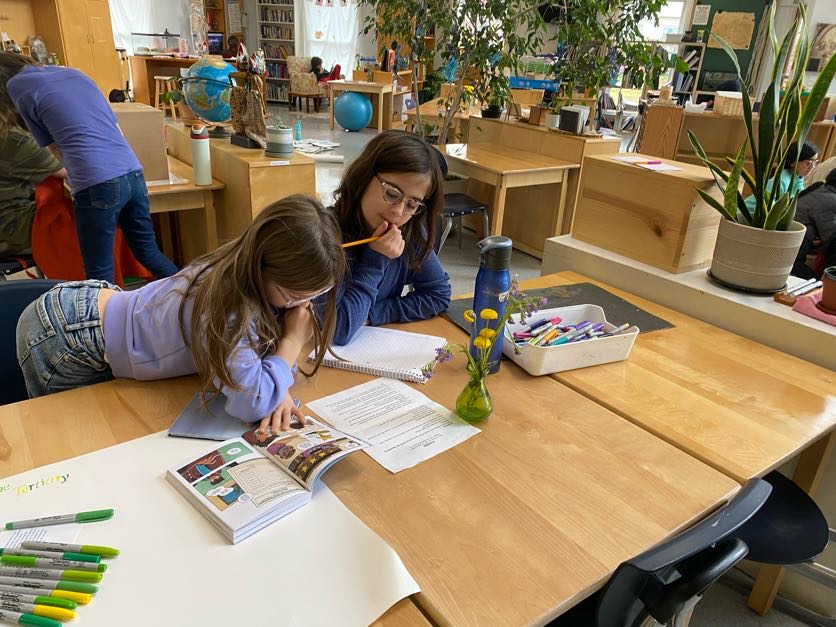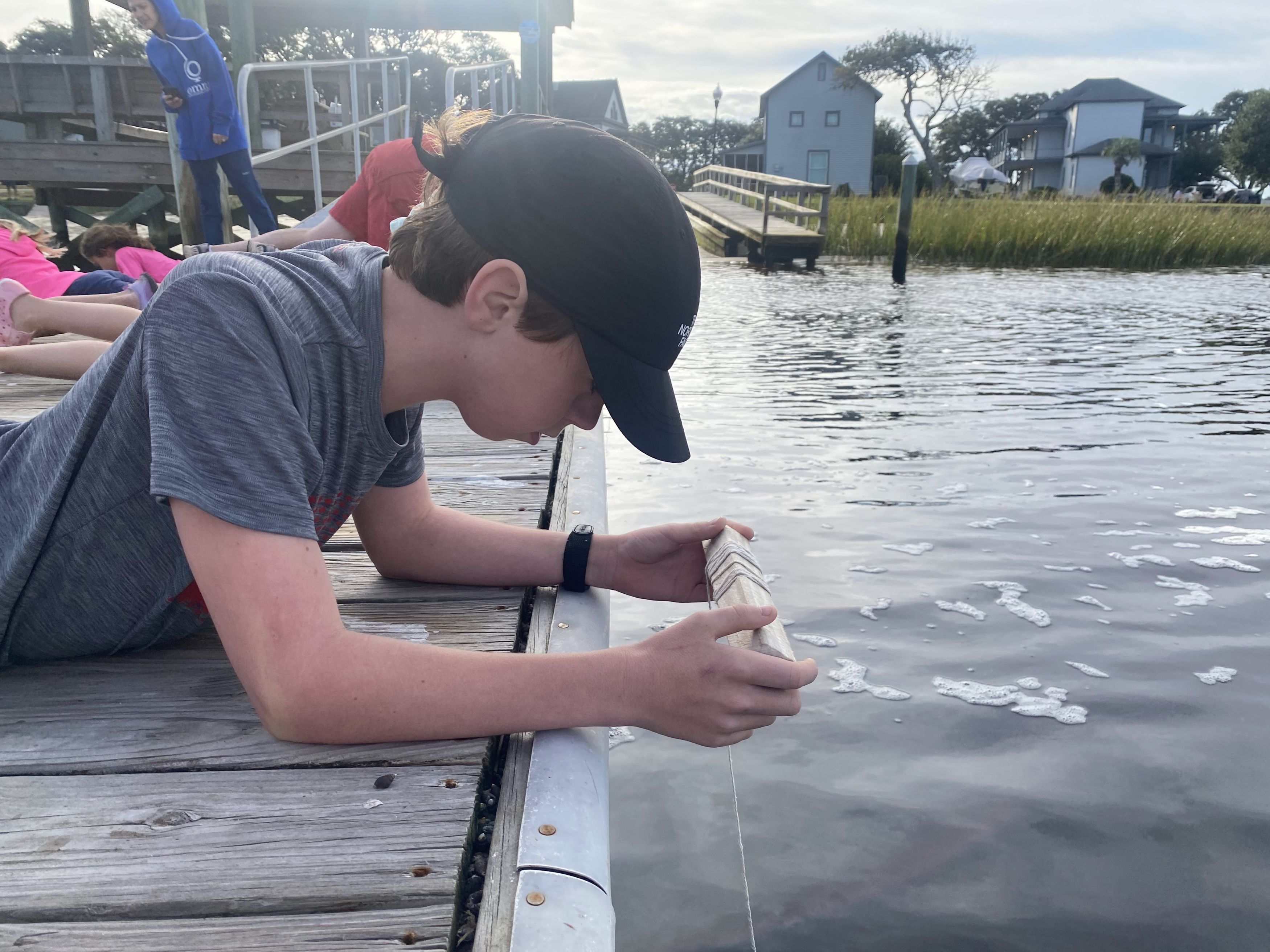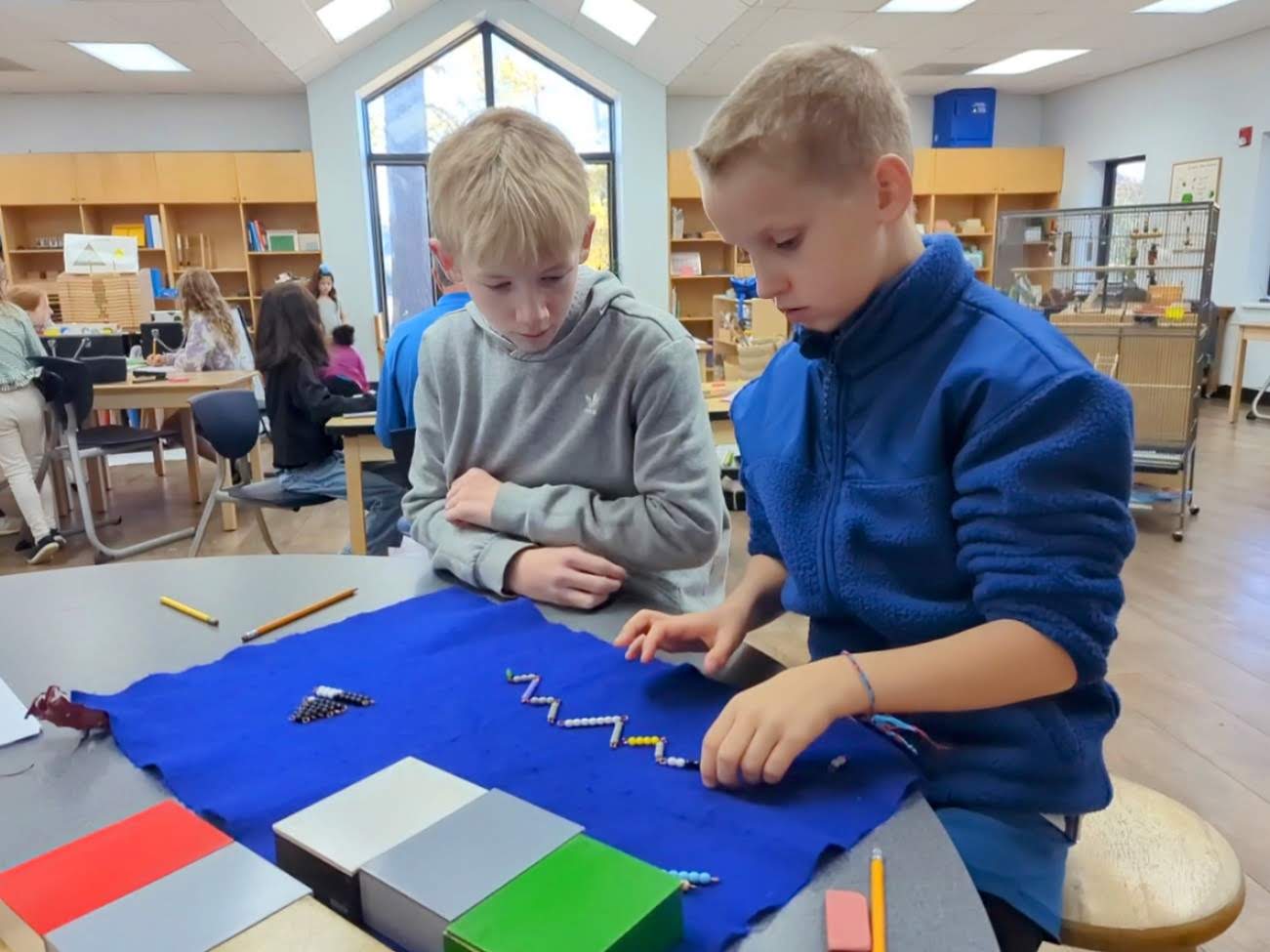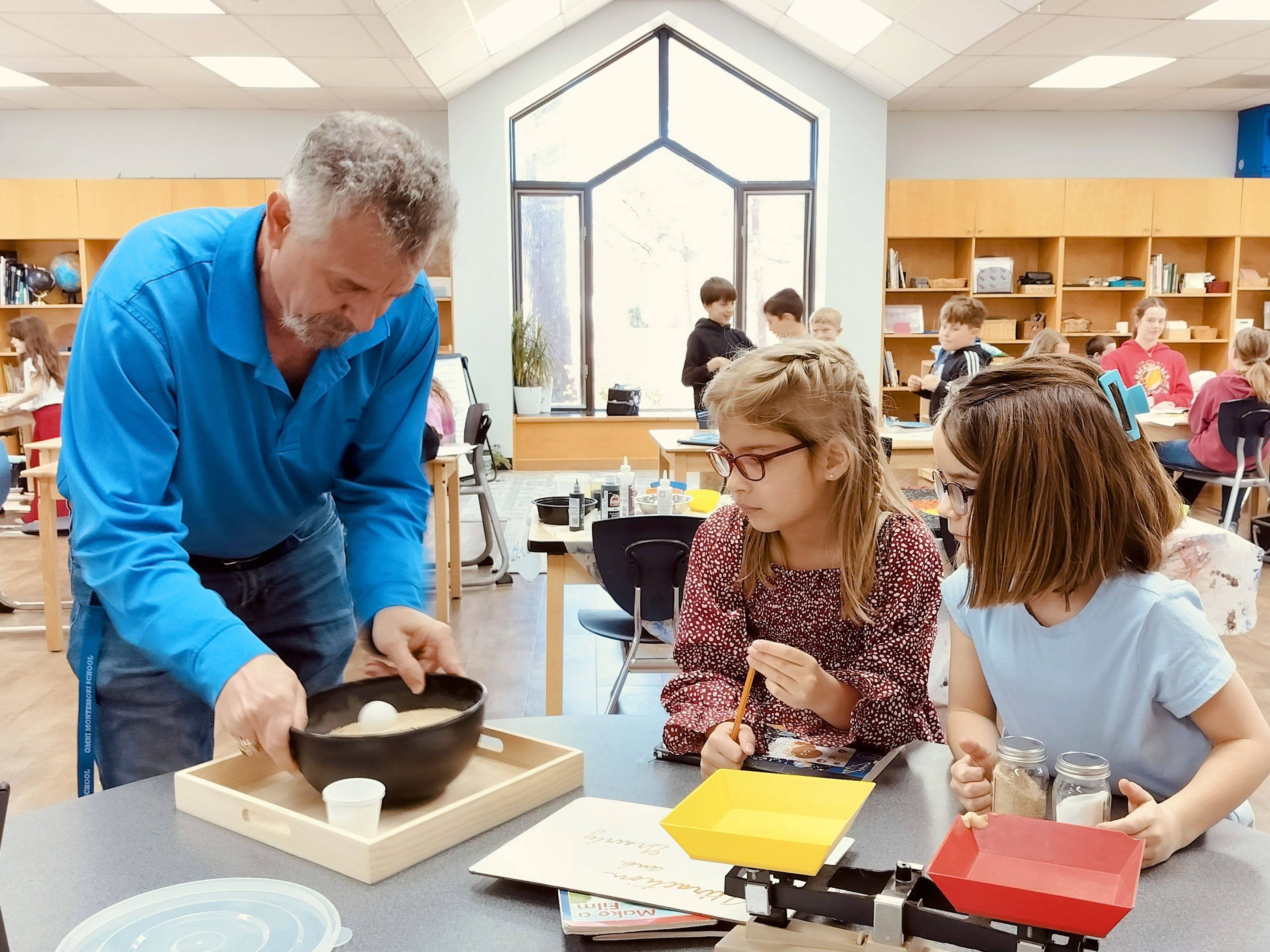Education for life

Elementary Program (ages 6-12)
Elementary Program
A World Expands
When students transition from Omni’s Primary Program into the Elementary years, everything seems to grow—literally and figuratively. The classrooms are larger. The kitchen and garden are bigger. Even the green space for play stretches wider. Children, too, have grown—not just in size, but in intellect, curiosity, and social needs. Their environment is designed to reflect and support this growth, with materials, furniture, and activities tailored to their developmental stage.
What expands most of all is their desire to explore the world and understand their place in it.
Elementary-age children are entering what Dr. Maria Montessori called the Second Plane of Development stage marked by powerful imagination, reasoning, and an eagerness to ask not just what, but why, how, when, and where. This is a time of boundless intellectual curiosity and increasing social engagement.

Cosmic Education: The Big Picture
Maria Montessori believed that children of this age thrive when they are presented with a broad, interconnected view of the universe. She called this approach Cosmic Education—a curriculum that reveals how all things in the universe are connected. This big-picture framework encourages students to explore and discover meaning through inquiry, connection, and hands-on learning.
“Our Elementary classrooms are not about presenting facts for memorization,” says one Omni guide.
“They are about providing students with the big picture and allowing them to break it down, connect the pieces, and come to true understanding.”

A Curriculum Built for Exploration
Omni’s Elementary program is a cohesive six-year journey, divided into two multi-age classrooms:
- Lower Elementary (Grades 1–3)
- Upper Elementary (Grades 4–6)
Within these environments, learning is not limited to textbooks. Instead, students are introduced to Montessori’s Five Great Lessons, which serve as foundational stories that spark curiosity and inspire independent research:
1. The Coming of the Universe and Earth
2. The Coming of Life
3. The Coming of Humans
4. The History of Writing
5. The History of Numbers
These sweeping narratives give students a sense of place in the universe and a meaningful context for all subsequent learning in science, history, geography, language, and math.

The Role of the Guide
Rather than delivering pre-set lessons from a syllabus, the Elementary guide observes, listens, and introduces materials and experiences tailored to each student’s interests and readiness.
Learning unfolds through:
- Hands-on materials designed for discovery
- Independent and collaborative projects
- Outdoor exploration and community engagement
Students are encouraged to question, research, and reflect—building not just academic knowledge, but critical thinking, responsibility, and a lifelong love of learning.

